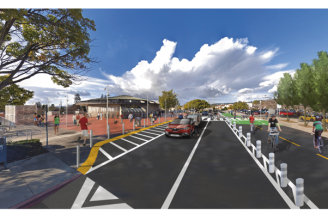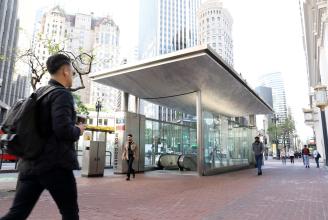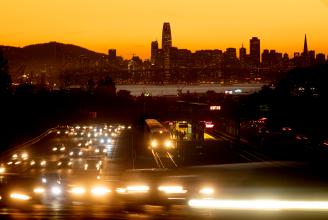The San Francisco Bay Area will include over two million new residents by 2040, for a total population of over nine million people. As the Bay Area grows, so will the need for BART. Below are some key projects in the works that will help make BART better, safer, and more useful for Bay Area residents for years to come.
Projects
BART has installed new fare gates systemwide. BART has also made infrastructure changes within our stations to prevent fare evasion, such as installing higher barriers and bringing elevators into the paid area.
Learn more about New Fare Gates & Station Hardening
We’re rebuilding and reinvesting throughout the BART system. Measure RR bond-funded projects include replacing worn rails, retrofitting the Transbay Tube, replacing escalators, and updating waterproofing in tunnels and structures.
Learn more about System Rebuilding
BART's Station Area Planning supports improved station access, safety, and customer experience. Our efforts advance goals identified in documents adopted by BART’s Board of Directors, like the Strategic Plan and Station Access Policy and Performance Measures by using BART’s Station Experience Design Guidelines and Multimodal Access Design Guidelines.
Learn more about Station Area Planning
This project will install and replace escalators at Downtown San Francisco stations. Of the escalators to be replaced, 22 are street to concourse level and 18 connect concourse with station platforms.
Learn more about San Francisco Station Escalator Replacement
This project will see the installation of 21 new canopies at Downtown SF stations to protect new escalators being installed from wear and tear and add a layer of security and cleanliness.
Learn more about San Francisco Station Canopy Project
BART’s TOD program aims to help create great communities near stations through development of BART property and partnerships with cities.
Learn more about Transit-Oriented Development (TOD)
BART Police Department Headquarters will be relocated from its aging current location to a new, higher-tech facility in Downtown Oakland near 19th St Station.
Learn more about BART Police Department Headquarters (BPD HQ)
BART has retired its legacy fleet and is bringing on its next generation of train cars that are more comfortable, more reliable, and designed to serve the Bay Area for the next 30 years and beyond.
Learn more about New BART Train Cars
BART's Station Modernization Program supports improved station access, safety, and customer experience.
Learn more about Station Modernization
BART is moving forward to implement the Transbay Corridor Core Capacity Project, which will increase peak hour capacity into San Francisco by 40%.
Learn more about Transbay Corridor Core Capacity Program
A train control system operates rail vehicles and supervises scheduling and routing while preventing collisions. Modernizing BART’s 50-year-old train control is an important component in addressing critical capacity, reliability, and safety needs.
Learn more about Train Control Modernization
For the crucial work of powering more frequent trains under the Transbay Corridor Core Capacity Program, five new traction power substations will be constructed:
Learn more about Traction Power Substations
To accommodate the much larger (a hoped for goal of 1,081 train cars) and more technologically advanced Fleet of the Future, BART will need to build a state of the art maintenance and storage facility. The proposed Hayward Maintenance Complex Project would be just that. By improving underdeveloped BART property on-site, and acquiring adjacent commercial property, the new complex will be large enough to service up to 250 vehicles.
Learn more about Hayward Maintenance Complex
In 2024, BART's falconry-based nuisance bird control initiative expanded to 13 stations following a successful pilot at El Cerrito del Norte. The program uses highly trained hawks to humanely mitigate pigeon problems at stations.
Learn more about Falconry-Based Nuisance Bird Control Program
BART officially retired its fleet of original train cars in 2024, and a handful of cars have been or will be delivered to individuals and organizations who submitted proposals for repurposing the cars.
Learn more about Legacy Fleet Decommissioning
BART is working to improve cell phone connectivity across the system and provide seamless wifi coverage in all stations and aboard trains by constructing new wifi and Bluetooth infrastructure and enhance cellular coverage.
Learn more about BART Wireless Technology
The Santa Clara Valley Transportation Authority is managing a project to extend BART to Silicon Valley. The 16-mile extension will provide a fast, reliable, and convenient alternative to driving in two of the most congested highway corridors in the Bay Area.
Learn more about Silicon Valley Extension
BART and the Capitol Corridor Joint Powers Authority have partnered to advance the Link21 program of system improvements that will transform the 21-county Northern California megaregion’s passenger rail network into a faster, more integrated system.
Learn more about New Transbay Rail Crossing (Link21)
The future Irvington BART Station is currently in design and will be located approximately halfway between the existing Fremont and Warm Springs/South Fremont stations.
Learn more about Irvington Station
















